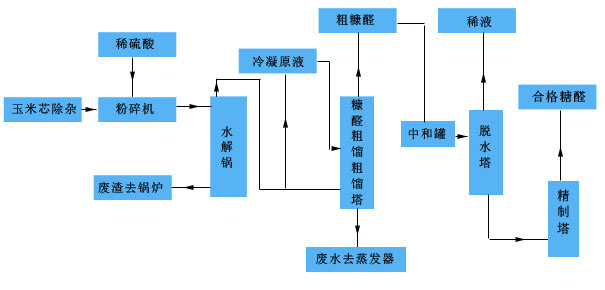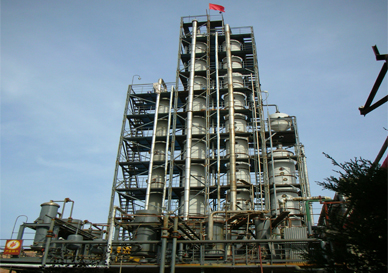OEM Manufacturer Asme Heat Exchanger Uses In Industry - Furfural and corn cob produce furfural process – Jinta
OEM Manufacturer Asme Heat Exchanger Uses In Industry - Furfural and corn cob produce furfural process – Jinta Detail:
Summary
The containing Pentosan plant fiber materials (like Corn cob, peanut shells, cotton seed hulls, rice hulls, sawdust, cotton wood) will hydrolysis into pentose in the fluence of the certain temperature and catalyst, Pentoses leave off three water molecules to form furfural
The corn cob is used by the materials usually, and after a series of process that include Purification, crushing, with acid hydrolysis, mash distillation, neutralization, dewatering, refining get the qualified furfural in the end.
The “Waste” will be sent to the boiler combustion, the ash can be used as filled material for the infrastructure or organic
Third, the process flow chart:

Chemical nature
Because furfural has aldehyde and dienyl ether functional groups, furfural has the properties of aldehydes, ethers, dienes and other compounds, especially similar to benzaldehyde. Under certain conditions, furfural can undergo the following chemical reactions:
Furfural is oxidized to produce maleic acid, maleic anhydride, furoic acid, and furanic acid.
In the gas phase, furfural is oxidized by a catalyst to generate anhydrous malic acid.
Furfural hydrogenation can produce furfuryl alcohol, tetrahydrofurfuryl alcohol, methyl furan, methyl tetrahydrofuran.
Furan can be made from furfural steam and water steam after decarburization with appropriate catalyst.
Furfural undergoes Conicaro reaction under the action of strong alkali to produce furfuryl alcohol and sodium furoate.
Furfural can undergo Boqin reaction under the action of fatty acid salt or organic base and condense with acid anhydride to form furan acrylic acid.
Furfural is condensed with phenolic compounds to produce thermoplastic resin; it is condensed with urea and melamine to make plastic; and it is condensed with acetone to make furfurone resin.
Corncob uses
1. It can be used to extract heavy metals from wastewater, and it can be used to prevent hot thin steel sheets from sticking together.
2. It can be used in the production of cardboard, cement board and cement brick, and it can be used as a filler for glue or paste.
3. It can be used as feed premix, methionine, lysine, lysine protein powder, betaine, various mold preparations, antifungal agents, vitamins, phospholipids, phytase, flavoring agents and madurin, safety Common enzyme choline chloride, etc., veterinary drug additives, nutritional carriers, can replace secondary powder, and is also one of the main raw materials for the fermentation of biological products.
4. Used for processing furfural and xylitol.
Product detail pictures:

Related Product Guide:
Our business puts emphasis over the administration, the introduction of talented staff, plus the construction of team building, attempting hard to boost the standard and liability consciousness of personnel customers. Our corporation successfully attained IS9001 Certification and European CE Certification of OEM Manufacturer Asme Heat Exchanger Uses In Industry - Furfural and corn cob produce furfural process – Jinta , The product will supply to all over the world, such as: Adelaide, Turkey, Armenia, Our production have been exported to more than 30 countries and regions as first hand source with lowest price. We sincerely welcome customers from both at home and abroad to come to negotiate business with us.
We have worked with many companies, but this time is the best,detailed explanation, timely delivery and quality qualified, nice!




